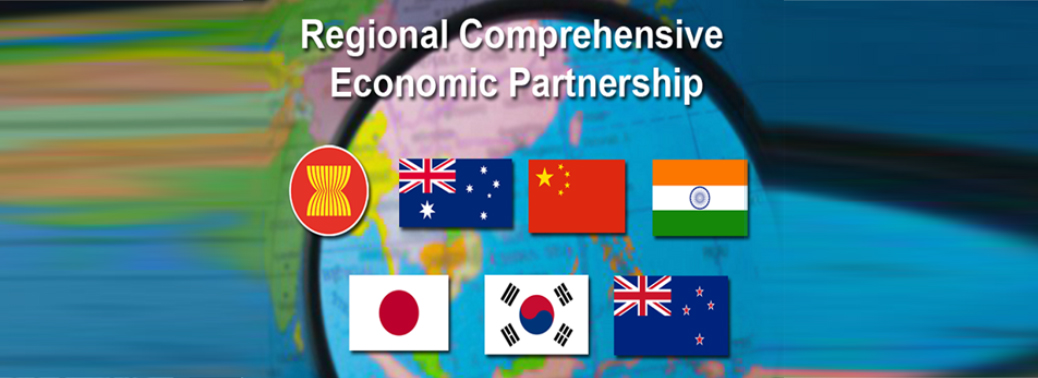REGIONAL COMPREHENSIVE ECONOMIC PARTNERSHIP (RCEP)
13, Sep 2019

Prelims level : International Relations
Mains level : GS-III- Bilateral, regional and Global Groupings and Agreements involving India and/or affecting India’s interests
Context:
- India will host a two-day meeting of representatives from the Regional Comprehensive Economic Partnership (RCEP) countries this month to discuss ideas to strengthen the proposed pact between the 16 partner countries.
Background:
- Talks are ongoing to negotiate the China-initiated Regional Comprehensive Economic Partnership (RCEP).
- RCEP grouping resolved to conclude negotiations for a free trade agreement by the year end while recognizing that growing protectionism may impact negotiating positions.
What is RECP:
- The proposed Regional Comprehensive Economic Partnership(RCEP) is gigantic in size and scope. It aims to create a free trade zone of 10 Asean nations and Australia, China, India, Japan, South Korea and New Zealand.
- This means a zero-customs duty zone in a geography that contributes 34% of global gross Domestic Product(GDP) and 40% of world trade.
- The region is also home to almost half of the world’s population
- RCEP— Regional Comprehensive Economic Partnership (RCEP) is an ASEAN-centred proposal for a regional free trade area.
- 10 ASEAN states: (Brunei, Burma (Myanmar), Cambodia, Indonesia, Laos, Malaysia, the Philippines, Singapore, Thailand, Vietnam) CLIMBB-PSTV +
- Six states with which ASEAN has existing FTAs (Australia, China, India, Japan, South Korea a and New Zealand)
Issue:
- The RCEP is a proposed trade pact between the 10 countries of the Association of Southeast Asian Nations and their six FTA partners, including Australia, China, India, Japan, Korea, and New Zealand.
- It accounts for 25% of global gross domestic product, 30% of global trade, 26% of foreign direct investment flows, and 45% of the world’s population.
Concern:
- India has been seeking a more balanced outcome of the RCEP deal with a strong agreement on services trade, including a deal on easier movement of skilled manpower.
- However, most members are reluctant to accept India’s proposal. With India’s trade deficit withChina and RCEP in 2018-19 standing at $53.6 billion and $105 billion, respectively, it is apprehensive that further liberalisation in tariffs to China could be detrimental to its domestic industries.
Government Intervention:
- National Logistics Policy and a multi-modal transportation bill will be soon taken to the Cabinet for clearance to reduce logistics cost for domestic industry.
- Look East Policy
- India’s Act East Policy focusses on the extended neighbourhood in the Asia-Pacific region.
- The policy which was originally conceived as an economic initiative, has gained political, strategic and cultural dimensions including establishment of institutional mechanisms for dialogue and cooperation.
What is Indian demand in RECP.
- Under services, India wants greater market access for its professionals in the proposed agreement.
- However, lower level of ambitions in services and investments, a key area of interest for India, does not augur well for the agreement that seeks to be comprehensive in nature.
Two Broad Interest groups in RCEP
- Export- Driven Trading Economy: Many ASEAN countries argue that even minor processing should qualify a product for FTA benefits.
- Manufacturing Economy: China or India argues that processing should be substantial else non-FTA country products will enter the domestic market.






